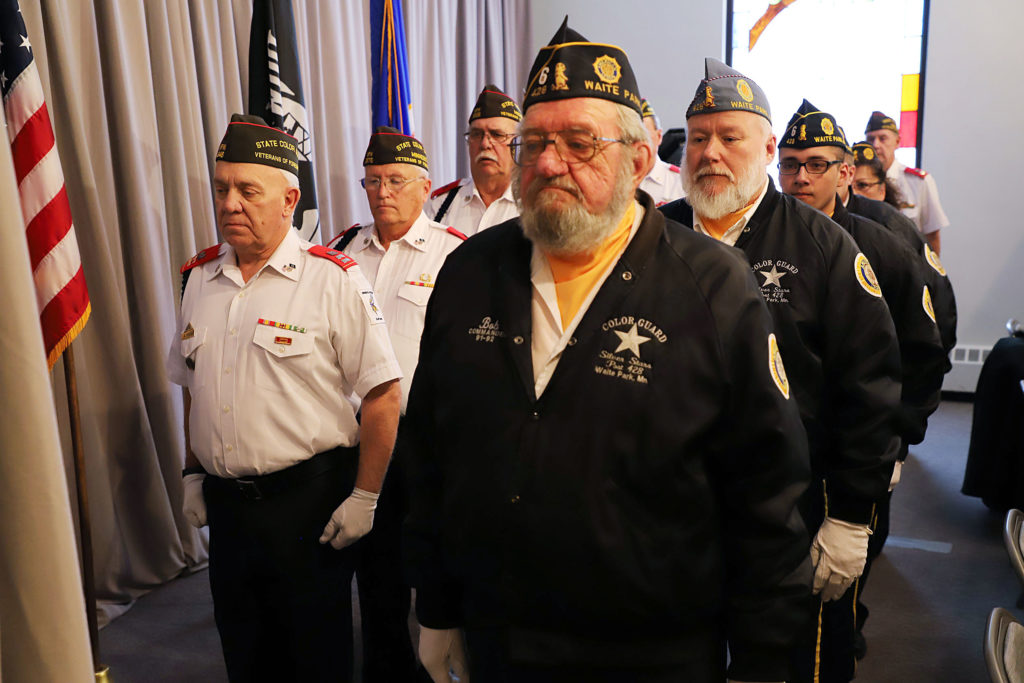
MINNEAPOLIS — New Commissioner of Veterans Affairs Larry Herke “probably thought I was stalking him,” said Peggy Moon at the opening of the steel truss bridge outside the Minneapolis Veterans Home on Jan. 9.
She said she bothered him so much about getting the bridge opened that Herke began approaching her first.
The bridge was declared unsafe in 2014. Moon was the Department of Minnesota commander for The American Legion in 2014-15 and chaired the Commanders’ Task Force at the time. She and the CTF pushed for the state to repair the bridge when Commissioner Larry Shellito ran the Minnesota Department of Veterans Affairs and again when Herke began in January 2019.
Moon now is the National Executive Committee alternative for the Legion’s Department of Minnesota.
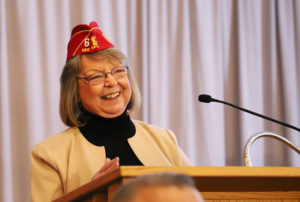
Without the bridge, the Minneapolis Veterans Home, which the MDVA runs, only has one means of coming and going — 46th Avenue South winding through Minnehaha Regional Park, Moon noted in her comments at the opening ceremony. In the summer, the corner of 46th and Godfrey Parkway becomes congested with tourists and locals alike enjoying Minnehaha Falls and the park amenities.
“If you drive that road three or four times, then you realize this is not going to work,” Moon said.
It makes it tough on employees and volunteers, but, moreover, it leaves the veterans home in a difficult situation should an emergency arise with their veteran residents, such as an ambulance going from the home to the VA Medical Center to the south.
Moon said following bills through the Legislature is no easy task, and it requires constantly letting another batch of lawmakers know about the desire of the veteran community.
“Every now and then it would be observed that Ben Johnson got a call from a senator who wanted to know who the hell Peggy Moon was,” she said, adding that’s how she knew she was doing her job well.
Johnson is the MDVA legislative director.
Herke, right after he was sworn in a year prior, sat down at his desk and read the first email. The sender was from the local community and offered congratulations, then told him to get the bridge open.
“Today,” he said Jan. 9, “I get to make good on that promise.”
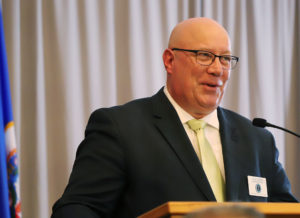
The history of the Minnesota Department of Veterans Affairs begins with the Minneapolis Veterans Home, founded in 1888 as the Old Soldiers’ Home and a place for indigent veterans of the Civil War, Herke said.
“It was not until World War I that medical care was provided,” he said.
Bridge No. 5756 was constructed in 1908. The Minneapolis Board of Park Commissioners wanted to way to connect to the Old Soldiers’ Home.
Herke said the bridge is “a rare example of steel deck arch construction in Minnesota.”
It was designed by Bayne & Hewett Co. and listed on the National Register of Historic Places and Structures in April 1989.
In 2014, the Minnesota Department of Transportation recommended its closure to pedestrians and motor vehicles alike. The Minnesota Department of Administration and the MDVA partnered on the bridge funding. In 2015, the Legislature approved funds for the design, and, in 2017, the special session bonding bill included $7.9 million for the repairs — replacing both approaches, reinforcing and painting the spans.
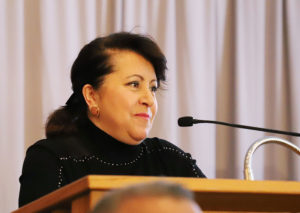
Herke thanked the Department of Administration, Department of Transportation and Department of Management and Budget.
Design work began in 2015, with the early repair work happening in late fall 2017. Some steel and welding issues delayed the project, Herke said, but repair work resumed within the last year, and, in July, crews began the final work on the two approaches.
The bridge was inspected in December.
Some painting and minor work will be completed this spring, Herke said.
“We’re excited to reopen the bridge today,” he said.
State Sen. Patricia Torres Ray said she was proud to secure funding and preserve the bridge for future generations of veterans and residents of the neighborhood.
“I cannot think of anything more important I do in the Minnesota Senate,” she said.
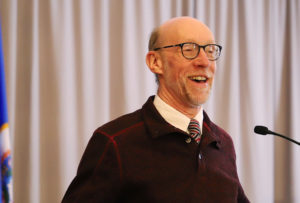
State Rep. Jim Davnie recognized the site’s value as historical to the city and to the state.
“I’m pleased that the bridge respects and holds that heritage,” he said.
The Minnesota Veterans Home is in the districts Torres Ray and Davnie represent.
Douglas Hughes, deputy commissioner for the MDVA, oversees the five veterans homes around the state, and he hosted the ceremony for the bridge opening inside Building 15 of the Minneapolis Veterans Home. The ribbon cutting followed, outside on the east end of the bridge.
